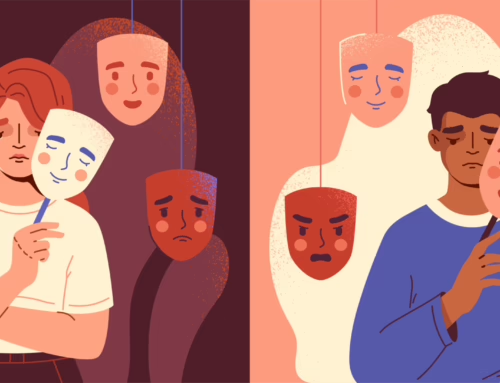Methylene Blue and Bipolar Disorder: Hope or Hype?
In the ongoing search for innovative treatments for mental health conditions, one surprising name has surfaced: methylene blue. Once known primarily as a dye and a treatment for certain blood disorders, methylene blue is now being studied for its potential impact on brain function—including in mood disorders like bipolar disorder.
But how effective is it? Is methylene blue safe? And could it really offer hope for people living with bipolar disorder?
At Tapestry, we’re committed to exploring both traditional and emerging treatments with curiosity, caution and clinical care. Here’s what you should know.
What Is Methylene Blue?
Methylene blue is a synthetic chemical compound first developed in the 1800s. It has been used for a wide variety of medical purposes, including:
- Treating methemoglobinemia, a rare blood condition
- Staining cells for biological research
- Disinfecting wounds
- Acting as an antidote for cyanide poisoning
More recently, researchers have become interested in methylene blue for its neurological and cognitive effects, particularly its ability to improve mitochondrial function and reduce oxidative stress—two areas that may play a role in mood disorders like depression and bipolar disorder.
How Might Methylene Blue Help in Bipolar Disorder?
Bipolar disorder is marked by alternating periods of mania and depression, and it is believed to involve imbalances in brain chemistry, energy regulation and inflammation.
Methylene blue may help by:
- Supporting mitochondrial energy production in brain cells
- Acting as a neuroprotective agent, potentially reducing brain cell damage
- Modulating monoamine neurotransmitters like serotonin and dopamine
- Reducing oxidative stress, which has been linked to mood instability
Some early studies and case reports have suggested that low doses of methylene blue may reduce depressive symptoms and even help stabilize mood in individuals with bipolar disorder. However, these findings are preliminary. Larger, well-controlled clinical trials are still needed.
Is Methylene Blue Safe?
While methylene blue is generally considered safe in low medical doses, it’s not without risks—especially when used outside of a hospital or research setting.
Potential Side Effects:
- Nausea or stomach discomfort
- Headaches
- Dizziness
- Bright blue urine or skin discoloration
- Increased heart rate or agitation (at higher doses)
One major risk is serotonin syndrome, a dangerous and potentially life-threatening condition that can occur when methylene blue is combined with SSRIs, SNRIs, or other antidepressants. For this reason, it should never be taken alongside these medications without strict medical supervision.
Should You Try Methylene Blue for Bipolar Disorder?
At this point, methylene blue is not FDA-approved for treating bipolar disorder or any psychiatric condition. While the research is intriguing and ongoing, it is still in the experimental stage.
That means:
- You should not attempt to self-medicate with methylene blue
- Any use should be discussed with a qualified psychiatrist or healthcare provider
- It should only be used within the context of a carefully managed treatment plan—especially if you are on other psychiatric medications
The Bottom Line
Methylene blue may hold promise as part of future mental health treatments, including for bipolar disorder, but we are not there yet. Research is still unfolding, and the safety concerns—especially around drug interactions—are very real.
If you’re struggling with bipolar disorder, the best course of action is to work with a licensed treatment team that can help you explore evidence-based therapies and holistic supports. At Tapestry, we stay informed about emerging science while keeping client safety at the center of everything we do.






